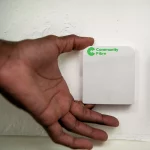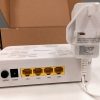Project Kuiper’s Global Satellite Broadband Network Rebrands to Amazon Leo

Internet retail giant Amazon has announced that their in-development Project Kuiper constellation of ultrafast broadband satellites in Low Earth Orbit (LEO) has been renamed to Amazon Leo. The first customer connections are also now expected to go live by the end of this year – initially in the US, Canada, UK, Germany and France.
Amazon currently has approval to deploy and operate their own constellation of 3,236 LEO satellites as part of Project Kuiper Amazon Leo (altitudes of between 590km to 630km). The company has in fact already launched over 150 satellites into orbit after a total of six rocket launches, which includes two of their initial prototypes – Kuipersat-1 and Kuipersat-2.
However, despite being known as Project Kuiper – inspired by the Kuiper Belt (a ring of asteroids in our outer solar system) – for the past six years, Amazon said they’re now “ready to share our permanent brand for the program: Amazon Leo, a simple nod to the low Earth orbit satellite constellation that powers our network.” But admittedly, this could get tedious when trying to reference LEO the orbit vs Leo the brand.
Advertisement
In terms of the service itself. Each spacecraft can technically process data traffic at speeds of up to 1Tbps (Terabits per second), albeit shared between many users. The company will also deploy three ground terminals (dishes) to cater for different types of customers (here and here) – Compact (residential and roaming), Standard (residential and business) and Pro (high demand enterprise, telecoms and governments etc.).
Project Kuiper Customer Terminal Specs (GEN1)
Compact
Peak Download Speed: 100Mbps
Peak Upload Speed: 20Mbps
Size: 18cm x 18cm x 2.5cm
Weight: 1Kg
Data & Power Ports: Ethernet/POE
Antenna: Single Phased Array – Shared (Tx/Rx) ApertureStandard
Peak Download Speed: 400Mbps
Peak Upload Speed: 100Mbps
Size: 28cm x 28cm x 3.3cm
Weight: 2.5Kg
Data & Power Ports: Ethernet/PoE
Antenna: Single Phased Array – Shared (Tx/Rx) AperturePro
Peak Download Speed: 1,000Mbps
Peak Upload Speed: 400Mbps
Size: 50.5cm x 77.8cm x 5cm
Weight: 17Kg
Data & Power Ports: Ethernet (data) + Ethernet (Mgt)
Antenna: Dual Phased Array – (Tx/Rx) SolutionEnvironmental Operating Specs (all terminals)
Link Availability: >99% in extreme global weather conditions (>99.5% on Pro)
Operating Temperature: -30c to +50c (-22f to +122f)
IPRating: IP66
Storage Temperature (Power OFF): -40c to +60c (-40f to +140f) ETSI EN 300 019-1-1 Class 1.2
Operating Humidity: Relative humidity: 5% to 100%
Storage Humidity: 0% to 100% condensing. ETSI EN 300 019-1-1 Class 1.2
The re-branding announcement also included an update on Amazon’s plan for a commercial launch of their Leo service: “We expect to introduce Amazon Leo service to select enterprise customers by the end of 2025, and will roll out service more widely in 2026 as we launch more satellites and add coverage and capacity to the network“. At present, there are still no details on how much UK consumers will have to pay to get a connection, although it’s likely to be competitive with Starlink.
Mark is a professional technology writer, IT consultant and computer engineer from Dorset (England), he also founded ISPreview in 1999 and enjoys analysing the latest telecoms and broadband developments. Find me on X (Twitter), Mastodon, Facebook, BlueSky, Threads.net and Linkedin.
Advertisement
Leave a Reply Cancel reply
Privacy Notice: Please note that news comments are anonymous, which means that we do NOT require you to enter any real personal details to post a message and display names can be almost anything you like (provided they do not contain offensive language or impersonate a real person�s legal name). By clicking to submit a post you agree to storing your entries for comment content, display name, IP and email in our database, for as long as the post remains live.
Only the submitted name and comment will be displayed in public, while the rest will be kept private (we will never share this outside of ISPreview, regardless of whether the data is real or fake). This comment system uses submitted IP, email and website address data to spot abuse and spammers. All data is transferred via an encrypted (https secure) session.






















































Vapourware
It’ll happen – but right now their only USP is that Jeff Bezos is despised slightly less than Elon Musk.